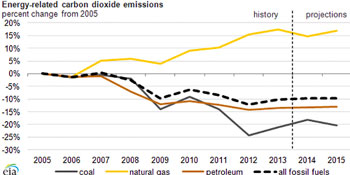As the discussion continues on the impact of EPA’s carbon regulations on power plants, the analysis mostly focuses on whether it goes far enough on cutting emissions and whether it will put the US in position to influence other major emitters to sign a climate treaty next year.
Regardless of those ramifications, the rules will accelerate innovation in technology development and deployment, making it more practical and affordable for all nations to reduce emissions, says Lux Research.
Lux expects four major technology sectors to get a boost:
Combined cycle gas turbines: states will first look to switch from coal to natural gas to use existing infrastructure, and this technology is 10% more efficient. Combined cycle turbines burn natural gas and the steam generated from the hot exhaust gas.
Commercial- and utility-scale solar: states like Georgia and South Carolina, where a lack of subsidies has kept solar developers away, will become new markets because of EPA’s rules. The regulations will also make it harder for utilities to raise objections to Renewable Portfolio Standards, which will be very helpful in meeting emission targets.
Negawatts are the cheapest compliance option: utilities will likely expand residential energy efficiency programs to reduce energy use. Especially in coal-heavy states, utilities will find that’s cheaper than producing electricity from coal.
Innovation in Carbon capture and Sequestration technology: while costs are currently too high, advanced technologies like metal organic frameworks could bring the price way down.
Developers of these technologies – including GE, Toshiba and Siemens – will expand into developing countries, bringing financing sources with them, says Lux.
Nevada’s Emissions Plummet
In related news, Nevada cut carbon emissions from power plants more than any other state between 2005-2011, falling 33%, according to the US Energy Information Administration.
It did so by switching from coal to natural gas and leading on geothermal and solar.
For 2013, the majority of Nevada’s electricity came from natural gas (68%), followed by geothermal and solar at 9.8%, and hydro at 8%.
Thanks to its Renewable Portfolio Standard, which requires 25% renewable energy by 2025, and other key incentives, Nevada ranks #2 in the US for geothermal production and #3 for utility-scale solar, and will soon have big wind farms.
On the other hand, Nebraska‘s emissions rose 20% from 2005-2011, the most in the nation. US emissions declined 10% during that time.

Read our article, Nevada’s Innovative Incentives Helping it Lead on Renewable Energy.
